
Title image above is copyright © Optimate Group Pty Ltd
First published 18th June 2021
Mints belong to the genus Mentha, and 24 species are recognised. Mints readily hybridise and around 15 different cultivars and varieties are recognised.
Mints can tolerate a range of conditions, but always do best where it is cool, moist, and shady. Their natural habitat in the wild is along creeks, streams, rivers, and damp places in general.
Air-Pot containers do dry out more than conventional pots because of the exceptional aeration the cones provide, so when I potted up three different mints into 9 L Air-Pot containers to see how they’d go, I really did not expect them to grow as well as they did! But I am very happy with their performance to date.
In fact, I was inspired to write about these three today, 18th June 2021, as we are experiencing days of 30-50 km/h winds. While doing some recovery watering I noticed how unaffected these plants were by the drying winds, while one of the mint’s mother plant in a regular pot was very water-stressed. (It always bounces back after a good soak and time to recover.)
Now this is not to say that the Air-Pot® is the reason for the difference. The mother plant is years-old, somewhat neglected, not recently fertilsed, and probably needs to be divided and repotted sooner rather than later. Any of those factors could explain it suffering water-stress so easily. (And other mints in regular pots alongside seem unaffected.) Here it is alongside the daughter plant just for comparison without making any claims. Both were photographed today, 18th June 2021:
The mother plant is on the left, in a 30 cm diameter, 25 cm high regular round black pot. The daughter plant on the right is in a 9 L Air-Pot®.

copyright © Optimate Group Pty Ltd
A close-up of the leaves from the top really shows the difference:

copyright © Optimate Group Pty Ltd
Again, I stress that the point of this article is not to compare different potting containers (that will come later), but just to write up my observations on how well mints in general do seem to take to the Air-Pot® thus far.
The three mints are:
- Moroccan mint, a variety of spearmint, M. spicata
- Chocolate mint, a variety of peppermint, Mentha × piperita, which is a cross between water mint and spearmint (M. aquatica × M. spicata)
- Mojito mint, a variety of Mentha × villosa, which is a cross between spearmint and apple mint (M. spicata × M. suaveolens)
The three were established plants of similar sizes, and each filled a 95 mm × 95 mm × 100 mm regular square plastic pot at the time. The Moroccan and mojito mints were new plants brought in just a few weeks prior, while the chocolate mint was a self-rooted runner of a much older and established plant here. Each went directly into a 9 L Air-Pot® in early summer, December last year 2020.
This is mojito mint, photographed today, 18th June 2021, without any attempt to pretty it up. It had died off heavily as winter approached, and I thought I would lose it. But it came back, and there is new growth coming through at soil level. Now settled into its first winter here perhaps?

copyright © Optimate Group Pty Ltd
This is Moroccan mint, also photographed today and without any attempt to pretty it up. It too had died off as winter approached, but not as much as the mojito. The Moroccan mint too has come back with plenty of growth. (The lack of dead upright stems as with the mojito is because we were eating the plant often when growing!)

copyright © Optimate Group Pty Ltd
And this is chocolate mint, also photographed today and without any attempt to pretty it up. Whether it’s a hardier type, or because it’s from an established and acclimatised mother plant, this mint never stopped. You can see the phenomenal growth as compared to the other two. (And we were eating this one as much as the Moroccan.)

copyright © Optimate Group Pty Ltd
And did you notice the mint growing through the cones?! They are all doing it, but this close-up of the mojito mint shows it best:

copyright © Optimate Group Pty Ltd
I do find this very appealing visually — it just sets off the lovely aesthetics of an Air-Pot® even more so in my eyes
(Please note that the effect is much nicer when the plant is kept trimmed top and sides, and not left to get a bit wild as in these photos. Something I shall do more regularly once spring growth resumes.)
Of course, this is not what an Air-Pot® is meant for. An Air-Pot® is a scientific and practical design for air-pruning roots and preventing their spiralling, and never had pretty shoots growing through the cones in mind. But if it can provide pleasure by being pretty as well as practical, then what harm has been done?!
It does make sense that mints are going to grow this way once you understand their spreading nature. Mints are notorious for their invasive behaviour and should always be contained in a pot of some sort. Even a tiny root piece left behind underground can send out a shoot and re-establish itself again.
The roots of the mint plants in the Air-Pot containers are doing the same thing as a tiny root piece left behind — sending out new shoots. This is the main way mints propagate themselves. These shoots can come from quite deep down too, and another reason mint is so hard to remove from a garden. In an ordinary pot, these shoots would simply emerge at the potting surface as fresh new growth, but in the Air-Pot® they are just as likely to grow into and out the first cone they reach, which can be anywhere along and up the Air-Pot® wall. This is especially noticeable in the photograph of the mojito mint, where runners are emerging from several cones all over. With the Moroccan mint there are two runners just emerging at different heights, and I predict that come spring they will appear all over too!
I shall continue to monitor these mints over this coming winter and into spring and summer. I am especially interested to know how the roots will develop, and will provide updates. Certainly a years-old mint plant in a regular pot requires more and more watering with age until it is repotted and/or divided. This is because it fills the pot with profuse root and below-surface shoot growth that quickly removes all available water and dries the potting medium out, and I suspect this is the case with the chocolate mint mother plant.
This may well be the case with mints in Air-Pot containers too, but only time, and side-by-side experiments (to come) will tell. In the meantime I shall enjoy them for what they are, mints growing in Air-Pot containers! And one thing is for sure, they have incredibly strong aromas and taste from all that compost feeding them!
Kristi Ellinopoullos
BSc(Hons), U.Syd. - double major in biochemistry and microbiology, with honours in microbiology
PhD, U.Syd - soil microbiology
Stumbled into IT and publishing of all things.
Discovered jujube trees and realised that perhaps I should have been an agronomist…
So I combined all the above passions and interests into plant-related websites and blogs, on which I write about plants, gardening, botany, soil chemistry, soil microbiology and biochemistry!
If you have any deep interest in microbiology and/or biochemistry, and how these apply to plants, I’m writing a deep-dive online book From Soil to Fruit here.





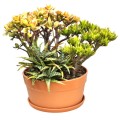

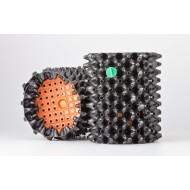










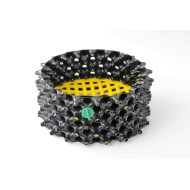






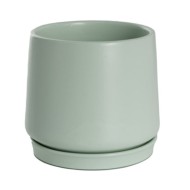









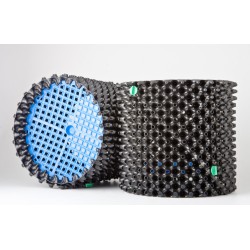
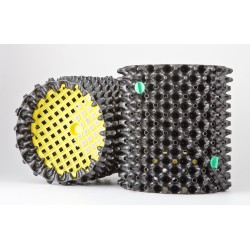





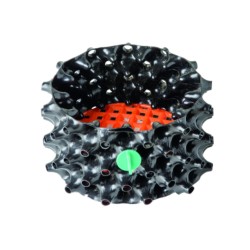



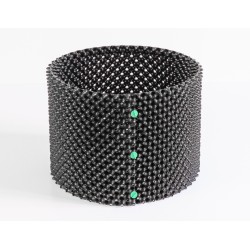

Leave a Comment